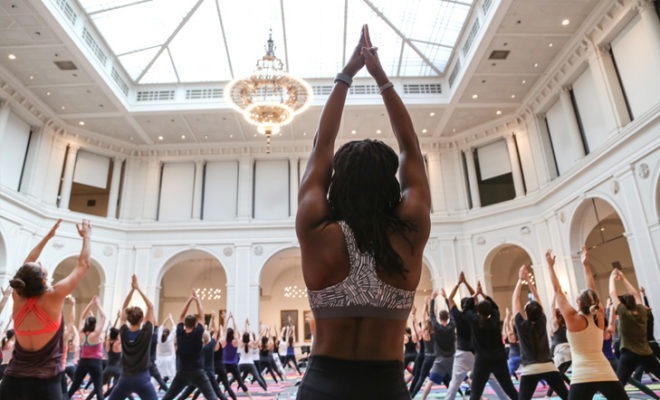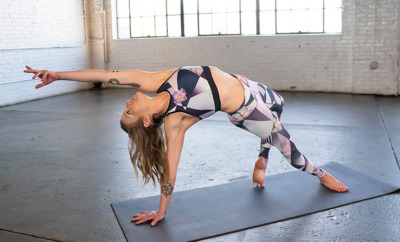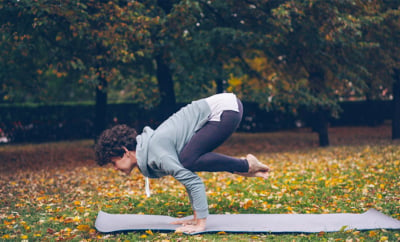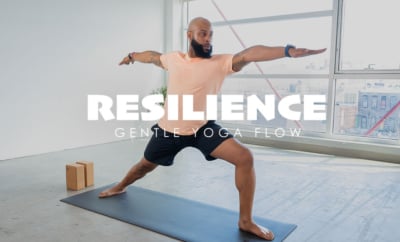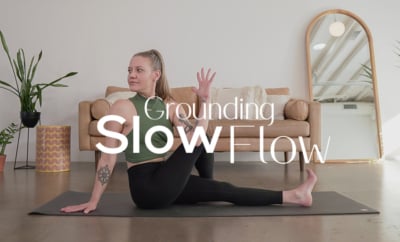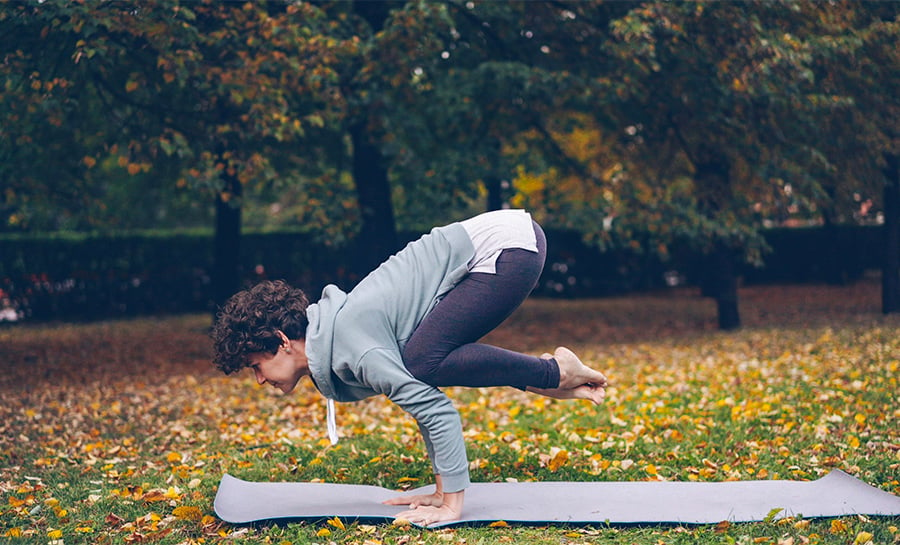7 Effective Tips For Yoga Teachers to Build Your Class Size

yoga class size tips featured
Are you obsessing over your yoga class sizes? Are you wondering if it really matters? Does this concern affect the way you show up for each student who did bring their ass to class?
Building yoga classes isn’t easy, and attendance is dependent upon several variables. It’s true that there is a basic formula, but every teacher will apply it somewhat differently. It often takes a bit of trial and error to grow the number of students who attend a specific class.
If you’re open to altering the way you offer a class, you stand to gain both momentum and provide a richer environment for others to build their practice in.
It’s an enticing road for any teacher to equate class size to their overall talent or value as an instructor. It’s seductive to decide you are the absolute bomb if classes are abundant. It’s equally as tempting for a teacher to decide they aren’t the bee’s knees if class attendance is low.
These concepts are not entirely true. And there are many things a teacher can do to either encourage – or discourage – people from showing up for class.
What Yoga Class Size Tells You
If you take over a popular, well-attended class that was already built by another teacher, this tells you a few things:
- The time of class works for many people
- The style, level of difficulty, and length appeal to many
- The teacher who built the class figured out how to meet the needs of various students and levels
Conversely, if you take over a class that hasn’t picked up momentum, you also start out with some very important information:
- Whatever the teacher was doing before you came along wasn’t working
- The class time might be challenging for many (early morning, late at night, middle of the day)
- There may be other issues to consider. Is this class competing with another popular class happening at the same time? Is it being advertised?
Not sure how to market yourself? Read 7 Ways Yoga Teachers Can Market Themselves to Build a Successful Career
If you are building a class from scratch and you’re seeing the numbers grow from week to week, this indicates that you are on the right path. So, how does one accomplish this? Well, there are many key components that need to be present for class attendance to grow.
Explore these 7 simple tips and considerations to build your class size and attract the souls that vibe with your yoga teaching style:
1. Talent and Experience
There are some yoga teachers who make it look so effortless and fluid that you wonder if perhaps they were simply born to do it. Straight up experience and genuine talent keep students coming back for more from their favorite teachers.
If you’ve got the gift, then augment it with getting as much teaching experience as possible – and then sharing that with your students. If anatomy is your schtick, share it in a way that’s helpful and informative for your students. Their practice will grow, and they’ll value your instruction that much more.
2. Maintain Palpable Passion
Passion is contagious on the mat – and students want to leave feeling positively influenced and inspired. The ability to convey a message that is seamlessly threaded throughout the class, by sharing your own passion, will keep students thinking about their yoga flow long after the class is over. Sharing your passion transforms your class from an hour of exercise to an hour of learning, growth, and transformation.
Sustain your passion for teaching yoga by cultivating your own yoga practice and knowledge.
3. Promote, Promote, Promote
Do people know there’s a new class on the schedule? Spread the word, and spread it thick. Market your class on social media, by word of mouth, and even offer free class passes to help get people in the door. Then it’s up to you to keep them coming back.
4. Student-Teacher Connection
Connecting with students is such a crucial aspect of teaching yoga. Learning and remembering names – and finding out a bit about each student is vital. For most yogis, a studio practice or class offers connection and community. Yoga students appreciate the teacher making the effort to say hello and get to know them, even if it’s just greeting them by name and asking how their weekend was.
Yoga Teachers – Need yoga insurance? Our friends at beYogi are offering YogiAproved.com readers $30 off your annual premium, dropping the annual cost to $149. Learn more here
5. Balance Dynamism and Accessibility
Keep your classes both accessible and dynamic. It totally blows to feel like you can’t do one damn pose in the sequence. But it’s also a bummer to go to class and leave feeling like you weren’t challenged at all. Offer a balanced mix of challenges along with modifications and plenty of reminders to take breaks and add on or back off as each student sees fit.
6. Use Your Words
Explain how the hell to get into a pose. Just calling out a pose for anyone who has it in their practice doesn’t give students an opportunity to learn and possibly achieve the pose. This may sound obvious, but it happens all the time. Provide cues that are as helpful and descriptive as possible.
If you notice a student still struggling, reword the cue so they understand. Don’t hesitate to demonstrate more challenging transitions or poses, and also get comfortable with offering physical adjustments as needed. In short, be sure you’re teaching in a way that sets each student up for success.
7. Creative Sequencing
Intelligent, creative, and intuitive sequencing skills are integral for a robust experience for your students on the mat. So, learn to sequence. Sequences need to make sense. Often, Vinyasa classes (for the teacher) become about how wild or original a sequence can be. That’s super, but if it doesn’t lend itself to intelligence and fruition, it’s just crazy for the sake of crazy.
Wow. That’s a lot to digest, I know. The truth is not everyone who desires to teach yoga is going to be exceptional at it right away – or even at every aspect of teaching. You have to decide you want to be remarkable.
A massive amount of time, energy, and effort go into creating a truly fantastic class. And it never stops. Building your yoga class is an ongoing, never-ending pursuit, just like your own practice.
Class Size Does Matter, But It’s Not Everything
Studios are a safe haven from all the pressures of the outside world. But they are also businesses, and need to turn a profit. They can only keep the doors open if enough students support the space. But class size is not absolutely everything.
Feeling burnt out and ready to roll up your mat for good? Read Professional Advice: How to Prevent Yoga Teacher Burnout
On occasion, you may find that your normally well-attended class is small. Small classes offer an opportunity for greater class cohesion and a more personalized practice. There is potential for a truly powerful experience. Embrace what a smaller class offers, and be grateful to those who did make the effort to be there.
I’ve been to a few classes where the instructor made it clear they were unhappy with how few people were in attendance. And I never went back to those classes. Don’t make that mistake. You can create a phenomenal experience for those who did show up. They’ll be back, all because you demonstrated gratitude, and gave it your all!


This Month's Letter
From the Editor
Monthly motivation and food for
thought from our founder.

